|
In these days of the World Cup, an article in The Guardian illustrates the ongoing destruction of the world's forests by pointing out that in 2017 the equivalent of one football pitch-sized forest was cut down every second, an astonishing rate of destruction. In total 29.4m hectares of forest disappeared during the year, impacting negatively on climate change and contributing to a possible “sixth mass extinction”.* See:
https://www.theguardian.com/environment/ng-interactive/2018/jun/27/one-football-pitch-of-forest-lost-every-second-in-2017-data-reveals One of the main reasons for the clearance of forests in Southeast Asia is for the planting of palm oil. Anyone who has driven through the hectares of palm oil plantations that dominate the landscape in large areas of Malaysian and Indonesia will be aware of how monotonous and sterile the plantations are. Another recent article in The Guardian examines this in some detail. See: https://www.theguardian.com/environment/2018/jun/26/palm-oil-disastrous-for-wildlife-but-here-to-stay-experts-warn An analysis, from the International Union for the Conservation of Nature (IUCN), found that rainforest destruction caused by palm oil plantations damages more than 190 threatened species on the IUCN’s red list, particularly in Indonesia and Malaysia. Unfortunately, palm oil is here to stay; it provides a third of the world’s vegetable oil and the alternatives (soy, corn, rapeseed) require even more land than palm oil. The call is, therefore, for a controlled and sustainable planting of oil palm, a policy that governments and producers seemingly often only pay lip-service to. * The Sixth Extinction; An Unnatural History by Elizabeth Kolbert. Bloomsbury 2014.
0 Comments
A link to a recent article in the Guardian which focusses on the key points in BirdLife International's report The State of the World's Birds - https://www.theguardian.com/environment/2018/apr/23/one-in-eight-birds-is-threatened-with-extinction-global-study-finds This report is published every five years, and - perhaps predictably given the state of the world we live in - each report tends to describe a worsening situation c.f. the previous report. As Tris Allinson, senior global science officer for BirdLife International notes “The species at risk of extinction were once on mountaintops or remote islands, such as the pink pigeon in Mauritius. Now we’re seeing once widespread and familiar species – European turtle doves, Atlantic puffins and kittiwakes – under threat of global extinction.” Another species which immediately springs to mind to an Hong Kong observer is Yellow-breasted Bunting. This species is, in fact, referred to in the article, a comparison being made with the Passenger Pigeon. The Yellow-breasted Bunting has been hunted/trapped to the verge of extinction. Yet "Hunting and Trapping" is only the fourth most important threat to birds. At the top of the list is "Agriculture" followed by "Logging", although in many cases in the Third World these two are obviously interconnected.
A HALT TO RECLAMATION IN THE YELLOW SEA The mud flats on the Yellow Sea make up the most important feeding area for shorebirds on the East Asian - Australasian Flyway. Unfortunately in recent years, to the detriment of the shorebirds, about 70% of the mud flats have been reclaimed. The figures tell their own story: around 90,000 Great Knots have “disappeared” from their Australian wintering grounds; the population of Bar-tailed Godwits wintering in New Zealand has gone from 155,000 in the mid-1990s to 70,000 today. Fortunately, in January 2018 the Chinese government announced a halt to all “business-related” land reclamation along its coasts. Details of this can be found on Terry Townsend’s Birding Beijing site https://birdingbeijing.com/ (scroll down the home page) . If the policy is implemented rigorously, it will be a major step forward in preventing the continuing decline (and probable extinction) of a number of shorebird species. DECLINE IN THE POPULATION OF ORANGUTANS IN BORNEO
An international team of conservationists have recently published a report on the Bornean Orangutan. The team’s findings are disturbing: from 1995 to 2015, there was a loss of 148,500 orangutans in Borneo, leaving a current population of between 70,000 and 100,000. Such a rapid rate of decline is due to two main factors: habitat loss (forest being cut down for palm oil and acacia plantations) and – less well-known, perhaps - deliberate killing of the apes by hunters and farm workers. For more details, see the article in the Guardian newspaper at: https://www.theguardian.com/environment/2018/feb/15/dramatic-decline-in-borneos-orangutan-population-as-150000-lost-in-16-years The results of the International Black-faced Spoonbill Census 2017 has recently been made available. See http://www.hkbws.org.hk/web/eng/bfs_census_report_eng.htm .
This co-ordinated survey conducted on 13-15 January 2017 in all the known wintering areas came up with a total of 3,941 individual birds, which is a new high count and a far cry from the 300 that were known in the early 1990s. Taiwan is the most important area for wintering Black-faced Spoonbills with 2,601 birds (66% of the global population) being recorded; of these 1,810 were counted in the Tainan city area and 513 at Chiayi County. Away from Taiwan, Deep Bay in Hong Kong is the next most important wintering site for the spoonbills; 375 were recorded there and an additional 44 birds were counted in Macau. Despite the increasing numbers of Black-faced Spoonbills being recorded in East Asia, the species is still listed as Endangered by the IUCN as there is fear of “habitat loss to industrial development, land reclamation and pollution.” The spoonbills’ dependence on a few key sites tends to increase their vulnerability. We here in Hong Kong are lucky to have the Black-faced Spoonbill as a regular winter visitor. Unfortunately, and darkly ironic given the time and effort put into monitoring and protecting the species, there have recently been sightings in Hong Kong of spoonbills that have fallen victim to illegal gin traps. At least three birds have been involved to date, one of which was found dead. Of the other two, one in particular has little chance of surviving as the trap has clamped shut around its bill making it impossible for the bird to feed. See the HKBWS website: http://www.hkbws.org.hk/BBS/redirect.php?tid=27077&goto=lastpost#lastpost Hopefully, information will come to light of which fish ponds these traps are being used at so that the authorities will be able to take appropriate action. 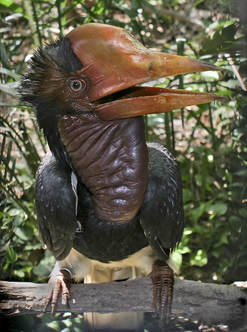 The Helmeted Hornbill Rhinoplax vigil inhabits the (diminishing) forests of southern Myanmar, Thailand, Malaysia, Borneo and Sumatra. Like other hornbills, this species has a conspicuous casque above its beak. Unlike most other hornbills, however, the casque of the Helmeted Hornbill is made up of solid keratin which is the same material as found in human hair and fingernails, as well as in rhino horn. This hornbill keratin is known as “red ivory” and – similar to the dentine that constitutes the ivory of elephant tusks - is carvable. In a 2015 article in BirdingASIA*, Nigel Collar noted that the use of this keratin for carved ornaments by the natives of Borneo is at least 2,000 years old and that trade between Borneo and China dates back to at least 700 A.D.; this included trade in “red ivory”, which even as long ago as the 14th century was far more expensive than elephant ivory. Collar notes that “Chinese carvings of hornbill ivory were exquisite; status-enhancing items such as belt buckles, seals, figurines, snuff boxes, plume holders, hair-grips, buttons, thumb-rings and bracelets could be fashioned from it.” By the 1950s , however, demand for the red ivory in China had ceased to exist. Unfortunately, as a result of recent socio-economic changes, the demand for “status-enhancing items” in China has recently snowballed with disastrous results for the Helmeted Hornbill, which is now categorised as Critically Endangered by the IUCN. Black market prices for red ivory are up to five times higher than elephant ivory and sophisticated criminal networks already supplying animals, plants and their by-products to Chinese clients have, since 2011, added red ivory to the illegal products they deal in. The figures quoted by Collar based on information from experts on the ground in Southeast Asia are depressing: 500 Helmet Hornbills killed monthly in West Kalimantan in 2013; 1,111 Helmet Hornbill casques en route to China confiscated by Indonesian authorities between 2012 and 2014; hundreds of birds per month received by a middleman in the Chinese ivory trade from Sumatra in 2014/2015. The trade in red ivory is covered in an article by Sarah Lazarus in today’s (January 14, 2018) South China Morning Post. See http://www.scmp.com/magazines/post-magazine/long-reads/article/2127802/why-chinese-demand-red-ivory-dooms-helmeted . Lazarus updates the ground covered by Collar and adds a local element to the story, noting that Hong Kong is a key import hub for smuggling Helmet Hornbill casques into China. She illustrates this with a number of cases of people caught trying to move the casques across the border into the mainland. The fines and sentences given to these smugglers have so far been derisory and hardly likely to act as an effective deterrent. (Although, to be frank, the people caught at the border are just minor, dispensable pawns in this lucrative game – one HK man they caught said he was offered a mere HK$360 to smuggle 14 Helmeted Hornbill skulls into Shenzhen.) From Hong Kong and Shenzhen, a lot of the unprocessed casques are transported by road to Putian in Fujian province. Here, much of the red ivory is processed into beads – apparently beaded bracelets and necklaces are a fashionable trend among the middle classes in China. So a combination of vanity and greed is driving yet another species to unnecessary extinction. *Collar N.J. (2015) Helmeted Hornbills Rhinoplax vigil and the ivory trade; the crisis that came out of nowhere. BirdingASIA 24: 12-17. Yellow-breasted Bunting/China and Global Conservation/Illegal Logging in Palawan THE YELLOW-BREASTED BUNTING On the recent (December 5th) update to the Red List of Threatened Species, the IUCN classified the status of Yellow-breasted Bunting as Critically Endangered. A press release issued by the Hong Kong Bird Watching Society – see http://www.hkbws.org.hk/BBS/viewthread.php?tid=26936 - notes that within 14 years the status of the species has been uplisted four times. This quick transition from Least Concern through Near Threatened (2004), Vulnerable (2008) and Endangered (2013) to Critically Endangered is indicative of a very steep decline in the population; indeed, a note in the recent (December 2017) edition of British Birds compares the situation of Yellow-breasted Bunting to that of the Passenger Pigeon and points out that an estimated 95% of the global population has disappeared in the span of two or three decades. The main reason for this decline is hunting in China. The birds migrate and roost in large flocks, making them easy to trap. They are a popular food item, even though their capture was made illegal in 1997. However, enforcement is lacking. The IUCN report on this species – see http://www.iucnredlist.org/details/22720966/0 - states that “a black market in birds still persists and a huge number of birds are still sold annually. In 2008, one shipment of 4,300 individuals of this species was reportedly confiscated in Zhejiang province en route to Guangdong province, and the species is said to remain a famous delicacy in southern China.” There have even been reports of the Yellow-breasted Bunting being for sale on the Taobao website. This is the Chinese equivalent of Ebay or Amazon and is part of the Alibaba group. Details of this, and the company’s recent decision to remove the seller’s pages from the website can be found at Terry Townshend’s Birding Beijing website – see https://birdingbeijing.com/2017/12/07/critically-endangered-yellow-breasted-buntings-for-sale-online-in-china/ CHINA AND GLOBAL CONSERVATION
The note on the Yellow-breasted Bunting on the Birding Beijing website makes reference to the speech President Xi Jinping delivered to the 19th Communist Party Congress in October 2017. The speech is very conservation oriented and argues for “a model of sustainable development featuring increased production, higher living standards, and healthy ecosystems. We must continue the Beautiful China initiative to create good working and living environments for our people and play our part in ensuring global ecological security.” This concern for the environment is evinced in China's policy of reducing reliance on fossil fuel, notably coal. It is now a leading investor in solar and wind energy, and recently delayed construction of more than 150 coal-fired electricity plants in China. However, Bill Laurance of James Cook University in Australia argues in an essay published in The Conversation and reprinted on the Hong Kong Free Press website that this expressed desire for “global ecological security” is belied by China’s actions abroad. Laurance refers to the fact that China is the world’s biggest consumer of illegally poached wildlife and wildlife products: to the fact that it is the world’s biggest importer of illegal timber; to the fact that China’s investment and pursuit of natural resources in South America is a big driver of tropical deforestation and environmental degradation in general. Laurance concludes that “China’s huge international ambitions will have some positive effects, and could even be economically transformative for certain nations. But many other elements will benefit China while profoundly damaging our planet.” See https://www.hongkongfp.com/2017/12/09/chinas-growing-footprint-globe-threatens-trample-natural-world/ for the full article. ILLEGAL LOGGING IN PALAWAN And finally, a link to an article in The Guardian – part of the newspaper’s regular coverage of environmentalists in the Third World – about a small group of concerned civilians trying to put a dent in illegal deforestation in Palawan. It makes for disturbing reading. See https://www.theguardian.com/environment/2017/dec/06/environmental-crusaders-risk-their-lives-to-save-philippine-paradise Recent news from the Ornithological Society of the Middle East (OSME) about a Great Knot ringed in Kamchatka and discovered wintering in the United Arab Emirates in January 2017. The link to the website page describing this discovery is http://osme.org/content/russia-love-or-least-ring-kamchatka-great-knot-reaches-arabian-gulf and there is also a short video about it on YouTube at https://www.youtube.com/watch?v=ucTMKBdUxAo&feature=youtu.be
OSME have pointed out in an online posting about the Great Knot that the species” has recently been up-listed to Endangered according to the IUCN red-list of threatened species based on a recent population decline of about 78% in the Australasian wintering population. Small numbers do winter in the Arabian Peninsula and the sighting of ‘EI’ (as it is affectionately known) has established for the first time a migratory link between the Russian Far East and the Middle East.” That figure of “78%” is deeply disturbing and is presumably a sad indicator of the increasing loss of mud flats on the East Asian flyway. Most people reading this will be aware of the dire situation with regard to the enigmatic shorebird, the Spoon-billed Sandpiper. The population has declined from 2,000+ breeding pairs in the 1970s to fewer than 250 pairs in 2014. If the current rate of decline continues, the species will be extinct within the next few years.
There is a particularly high mortality rate of young birds, seemingly because of habitat loss on its migration route, especially in the Yellow Sea area, and because of trapping on the non-breeding grounds, namely in Myanmar. A number of conservation groups are working together to try and save the Spoon-billed Sandpiper. Initiatives consist of: (i) encouraging the cessation of trapping on the non-breeding grounds, notably in the Bay of Martaban, Myanmar (ii) establishing a captive breeding programme at Slimbridge in the UK (iii) establishing a headstarting programme where eggs are collected from incubating birds on the breeding grounds and the hatchlings are hand-raised in captivity to fledging age before they are released back into the wild. (iv) working with Chinese conservationists and other Chinese officials to establish protected reserves on the mudflats on the Jiangsu coast, a crucial area for migrant Spoon-billed Sandpipers (and other waders) on the their way to and from their breeding grounds (v) satellite tracking of tagged birds to increase knowledge of the movements of Spoon-billed Sandpipers (currently, scientists do not know where 75% of spoon-billed sandpipers breed and where around 25% winter) Further details of these initiatives, along with latest updates of the 2017 headstarting programme, can be found at http://www.saving-spoon-billed-sandpiper.com . The Collared Crow occurs in southern and eastern China, and northern Vietnam. It is currently listed as Near Threatened by BirdLife International as it seems to be suffering a moderately rapid decline. A paper* in the recent edition of Forktail, the journal of the Oriental Bird Club, looks at the historical literature and compares the Collared Crow’s past status with a review of recent records (2003-2014). The authors conclude there has been a major decline in both the abundance and distribution of the species, primarily because of a change in farming practices since the 1950s, namely agricultural intensification leading to a reduction in food supply combined with an over-use of pesticides. Human persecution is also a contributory factor.
The total number counted during surveys in 2003-2014 amounts to just 1,847 individuals. Of these, 525 were recorded in the Dabie Shan in central China (Henan, Hubei and Anhui provinces) and 362 were recorded in Hong Kong. These two areas (along with Cao Bang in north Vietnam – 120 birds) are therefore of particular conservation importance for this species. The authors suggest that its status be uplisted to Vulnerable. *Leader, P.J., Stanton, D.J., Lewthwaite, R.W. & Matrinez, J. (2016) A review of the distribution and population of the Collared Crow Corvus torquatus. Forktail 32:41-53. |
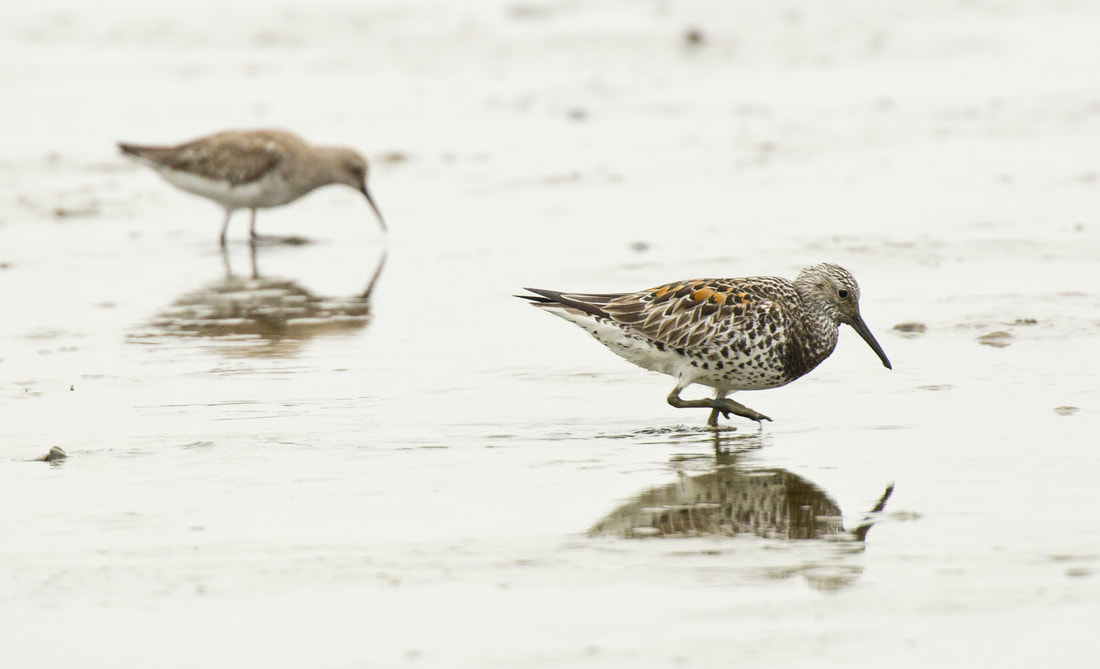
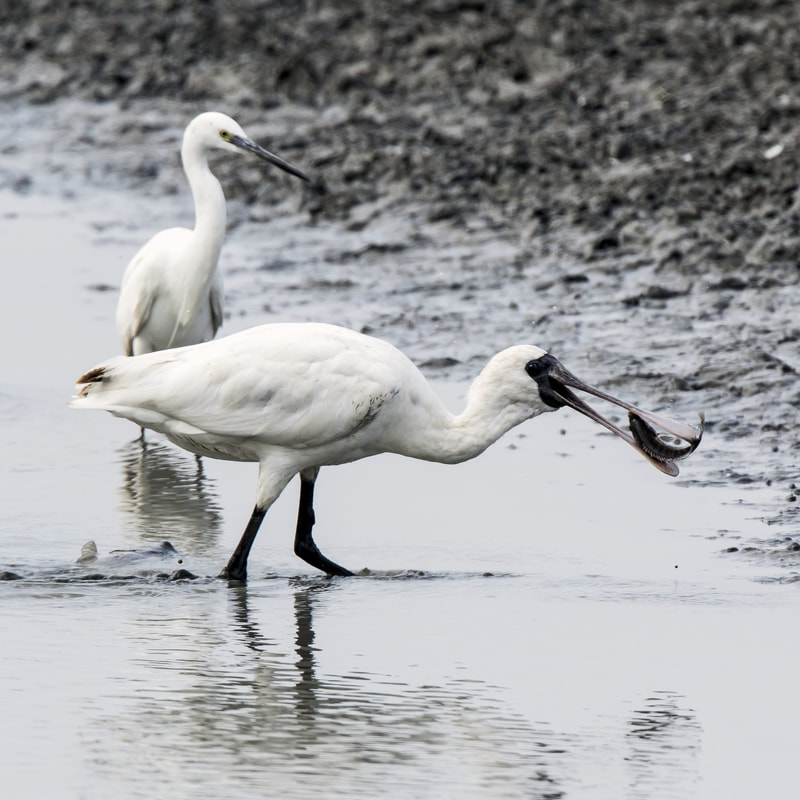
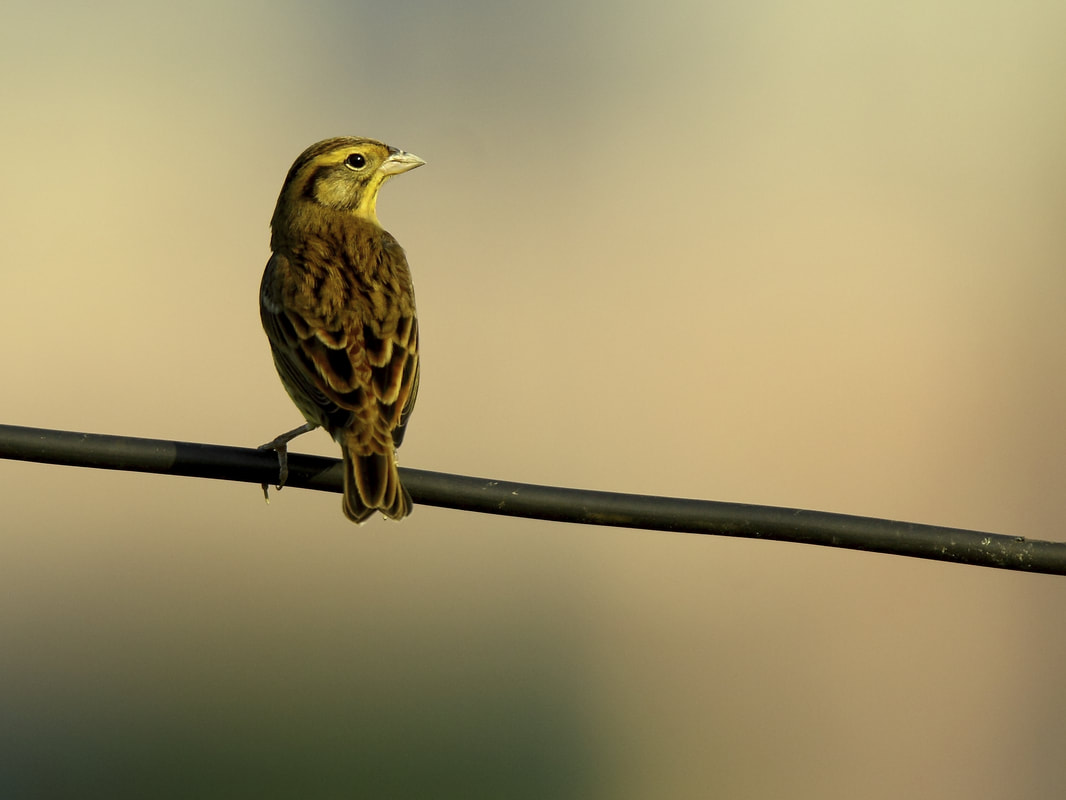
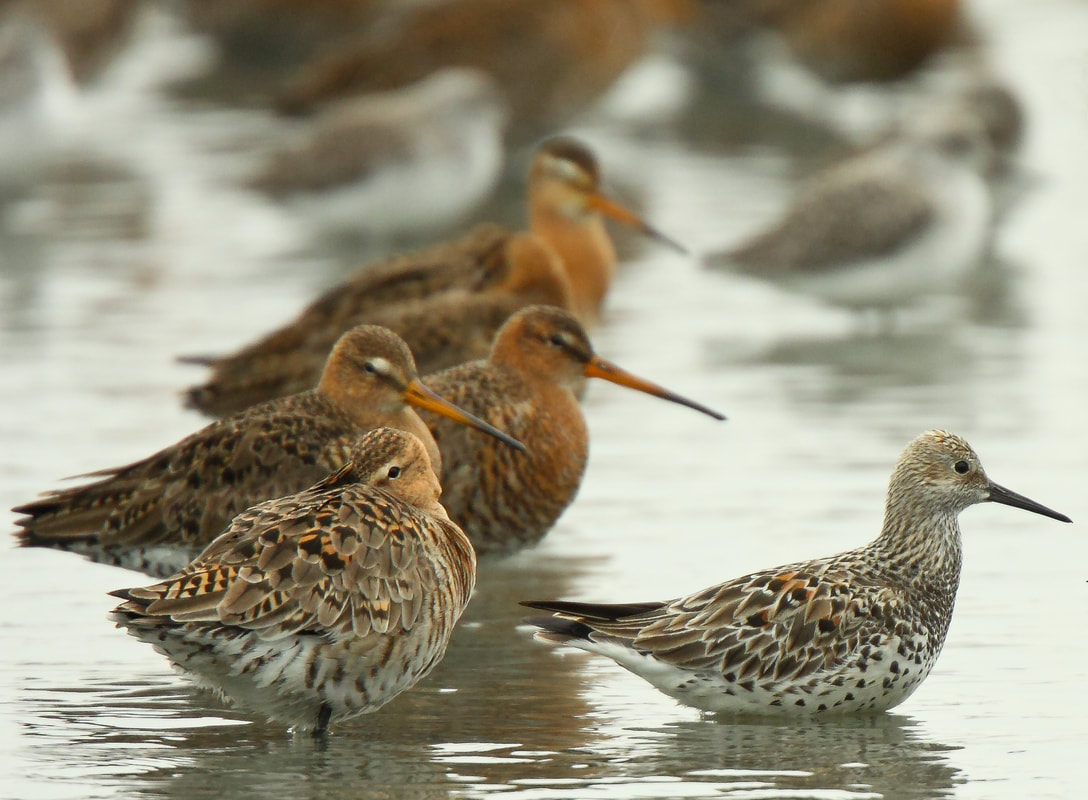
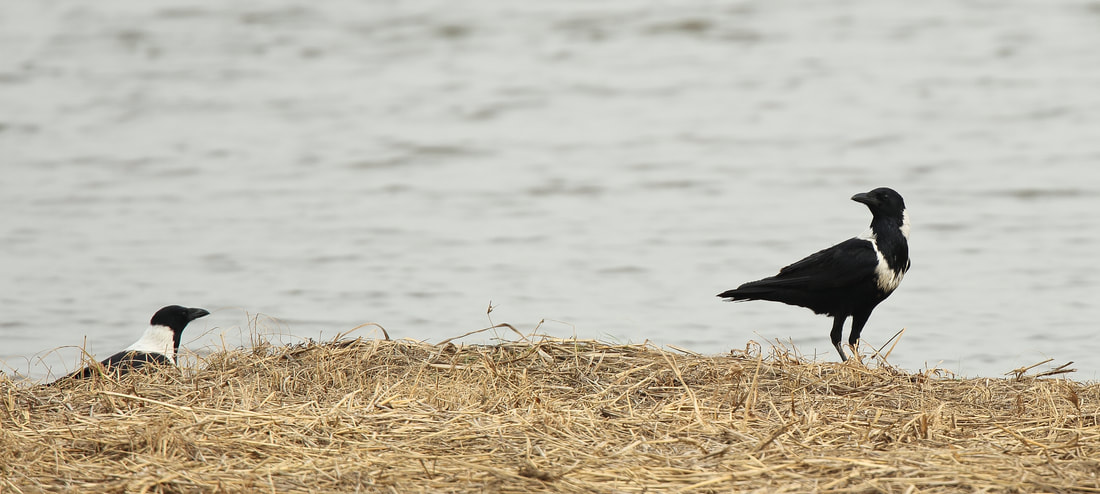
 RSS Feed
RSS Feed
